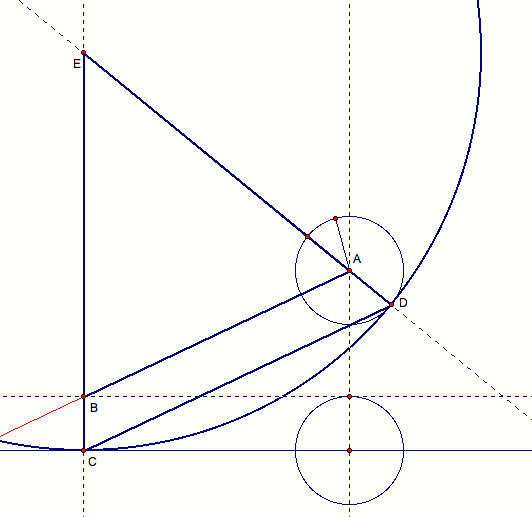
Circles Tangent to a Circle and a Line
by Michael Walliser
Consider the following problem: We are given a line, a circle and a point on the circle. We must then construct a pair of circles that are tangent to the line and to the given circle at the given point. We'll look at two separate approaches to solving this problem using GSP.
Here is our starting point:

Let's keep things simple by just making one circle at a time. We know a few things about the location of the center of the desired circle. First, since it is tangent to the given circle at a given point, we know that our desired center lies along the line defined by that point and the center of the given circle.

Second, we know that its distance along this line from the edge of the given circle is equal to the perpendicular distance to the given line. So how do we use this information to our advantage? Let's start by drawing the tangent line to the given circle at the given point. We can construct this line because it is perpendicular to the diameter running through that point. What is the purpose of this line? Well, since our desired circle is tangent to the given circle at that point, it is also tangent to the tangent line at that point.

Recall what we know about our center. It lies along the line running through the given point and the center of the given circle, and its distance to that given point is equal to its perpendicular distance to the given line. Another way we can look at it is that its perpendicular distance from the tangent line is equal to its perpendicular distance from the given line. Is there a way we can construct the set of points that meets this requirement? Yes, it is the bisector of the angle formed by the tangent line and the given line.

So we have a line on which the center must lie, and a ray on which the center must lie. Thus, the intersection of these provides us with our center. We then construct the circle by making it pass through the given point of tangency. We now have the first of our two desired circles.

We make our second circle in a similar way. Let's return to this step:

We'll use the same principles, but this time we want the circle to be tangent on its inside. Thus, we need to bisect the supplemental angle to the one we did for the first circle. In order to create the angle bisector in GSP, we need another point, so we will construct a line parallel to the tangent line and use its intersection with the given line. That way, our angle bisector will always point in the right direction.

Now, just like before, we have a line and a ray, both of which the center must lie upon. Therefore, the center must be their intersection.
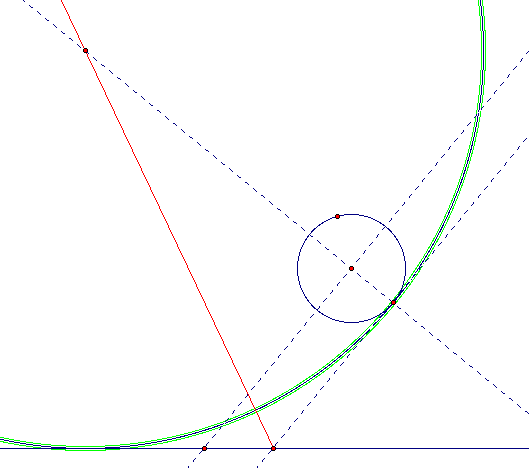
Clearly, this circle is quite large, but we can see where its center is and that it is tangent to the given line and the circle at the given point. To open a GSP file that uses this construction of the tangent circles, click here.
Now let's examine another way to create the circles, which uses similar principals. We'll again start with the knowledge that the center lies along the line passing through the center and the point of tangency of the given circle.

Since we know the distance from our desired center to the given point on the circle must be equal to its perpendicular distance from the line, it follows that there is an isosceles triangle whose base runs between the tangent points and whose other vertex is the center of the desired circle. There is also a similar isosceles triangle, then, whose top vertex is still the center of the desired circle, but whose other vertices are the center of the given circle, and a point along the perpendicular to the given line, but farther away by a distance equal to the radius of the given circle. So let's mark off that distance:
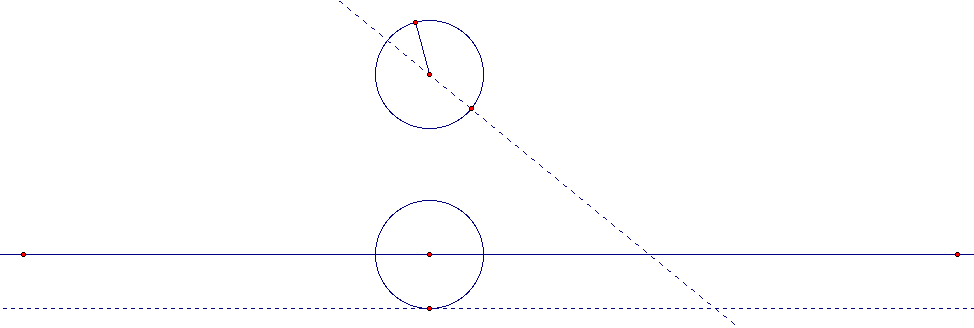
Now to make our triangle, we use the knowledge that its base angles are congruent. Our next step is to construct a line from the center of our given circle perpendicular to the given line, and bisect the angle that this line forms with the line on which our center lies. We'll analyze the reasoning behind this step in a moment.
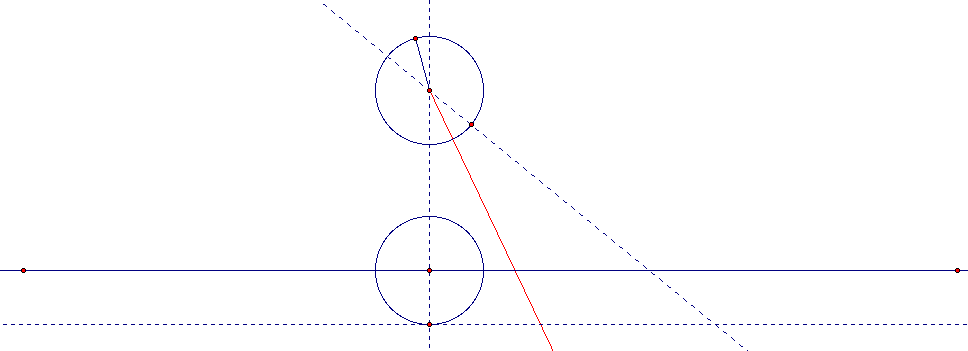
Now for visualization purposes, we'll add in some perpendicular lines and labels.
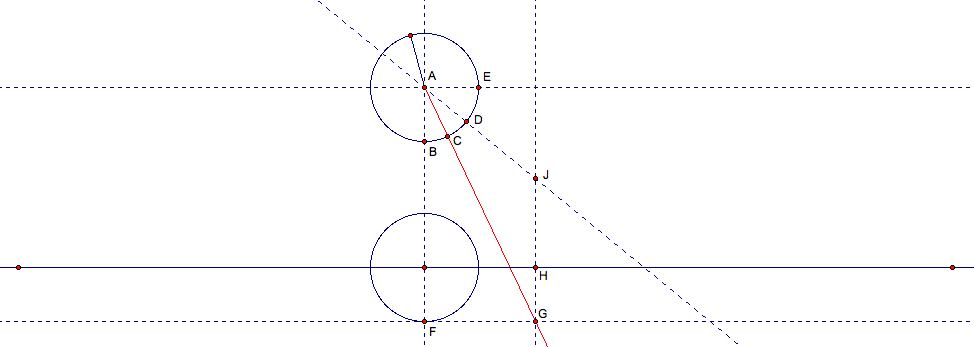
Let's examine what we know about the angles we see. Angles BAE and FGH are each 90 degrees. Angle FGC is congruent to angle EAC, and likewise, angle HGC is congruent to angle BAC. Angle BAC is congruent to angle DAC, so by transitivity, angle HGC is congruent to angle DAC. Therefore, segment AG forms the base of isosceles triangle JAG. Since, by construction, segment HG is the same length as segment DA, we also know that triangle JDH is isosceles with legs JD and JH. It is also important to note that line JG is perpendicular to our given line, and it follows that so is segment JH. From this knowledge, we can build our tangent circle from center J, passing through points H and D.

To build our other circle, we again use the same principles, this time using the bisector of the supplemental angle to the one we used before. This time however, we need to be removed one radius in the opposite direction, as shown below.
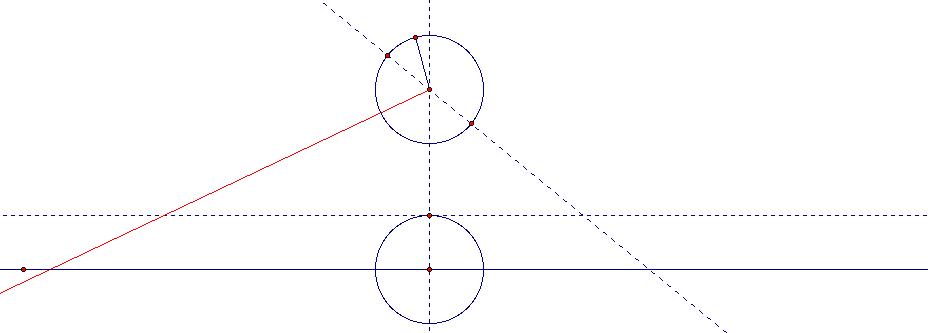
Following the same ideas, we construct a line from the intersection of the angle bisector with our parallel line, perpendicular to the given line. This line intersects the given line at the point of tangency, and its intersection with our first constructed line provides us with the center. Triangle EAB from the figure below corresponds to triangle JAG from our previous construction. Triangle EDC below corresponds to triangle JDH above.
